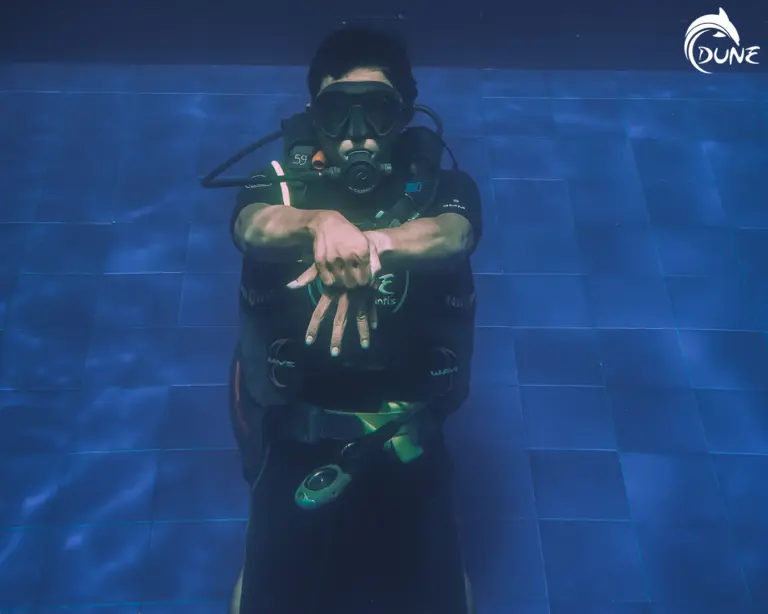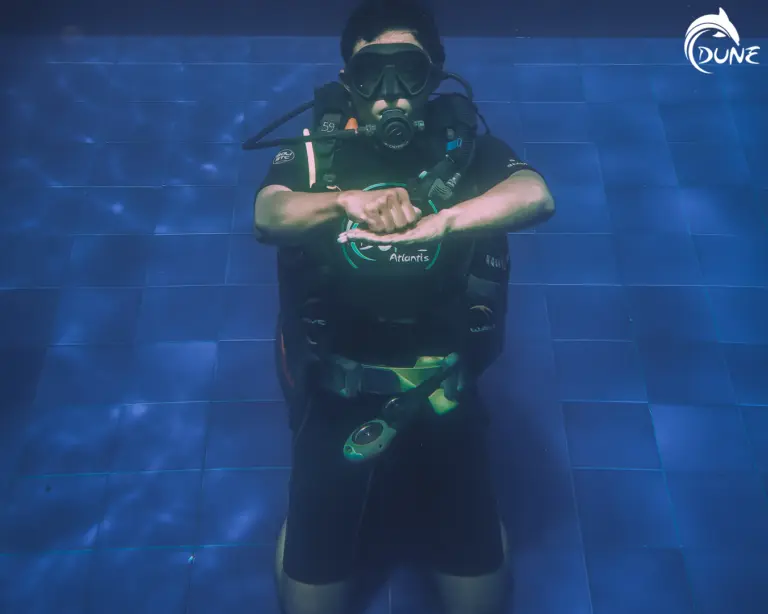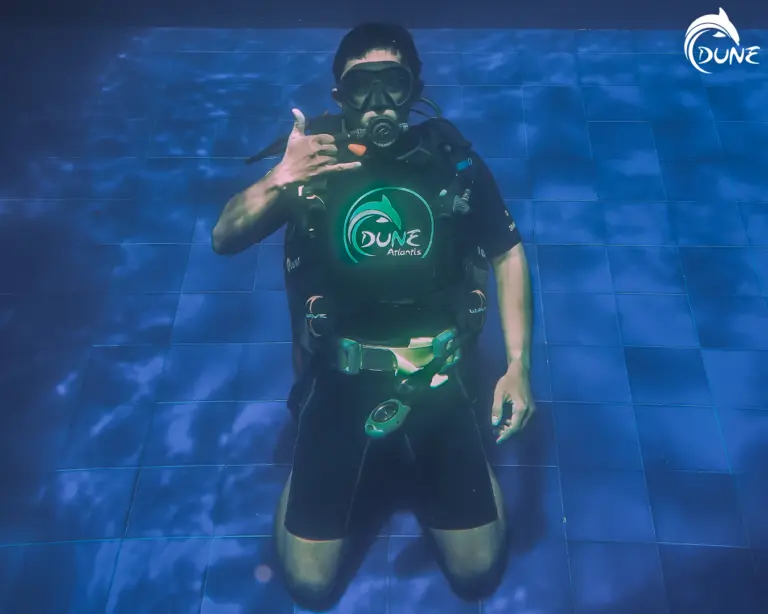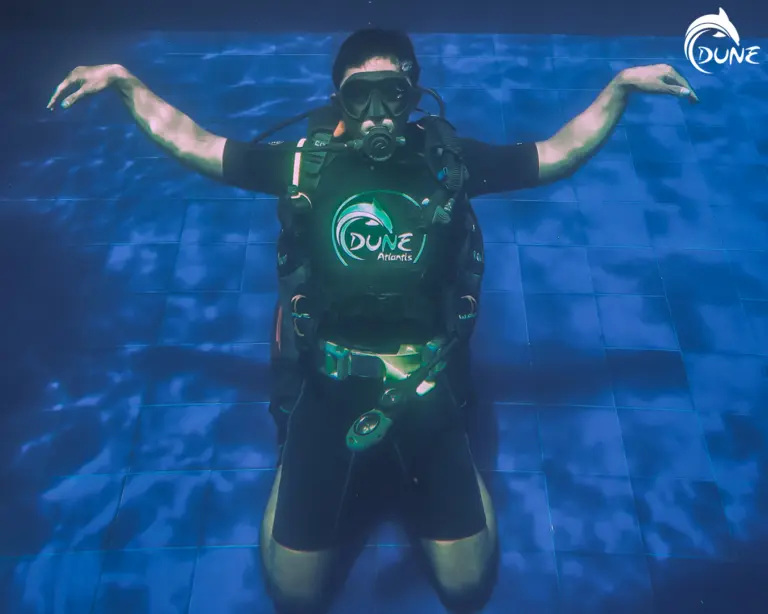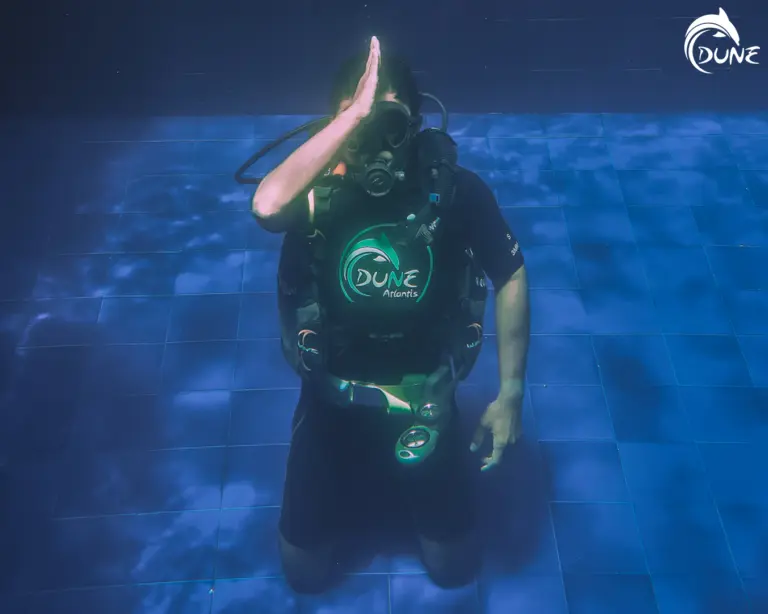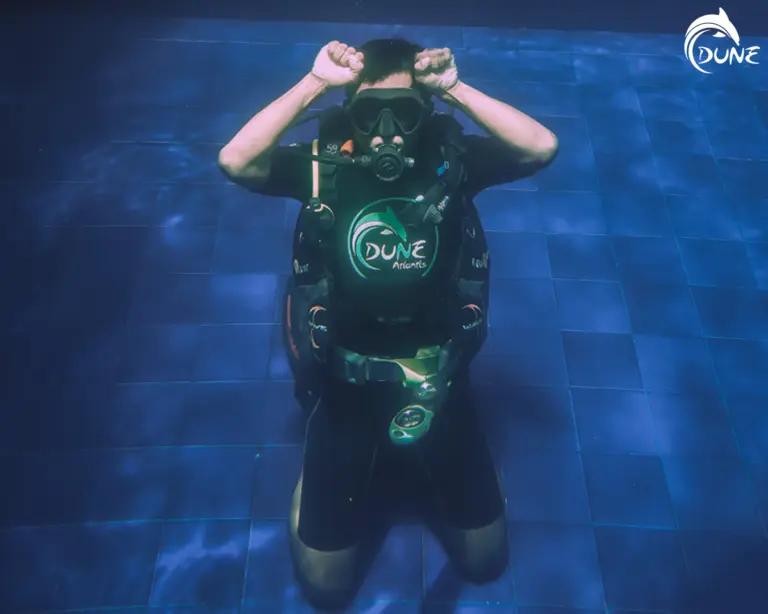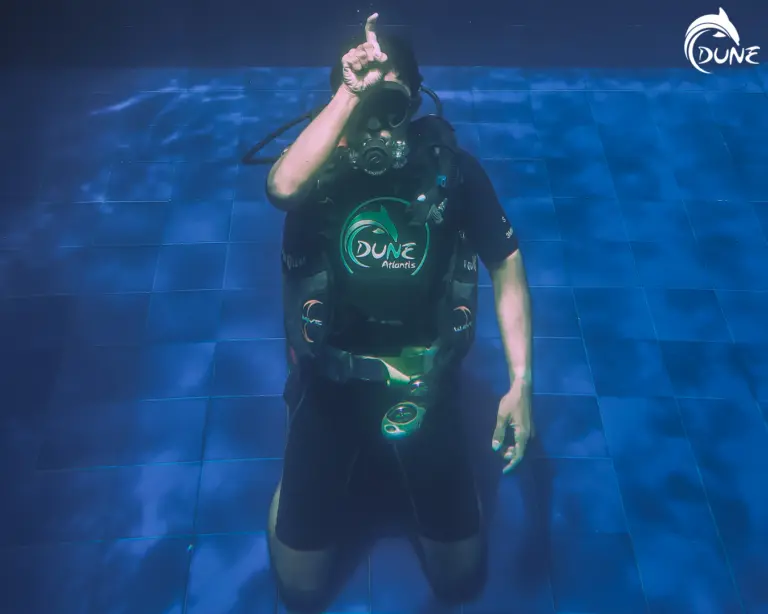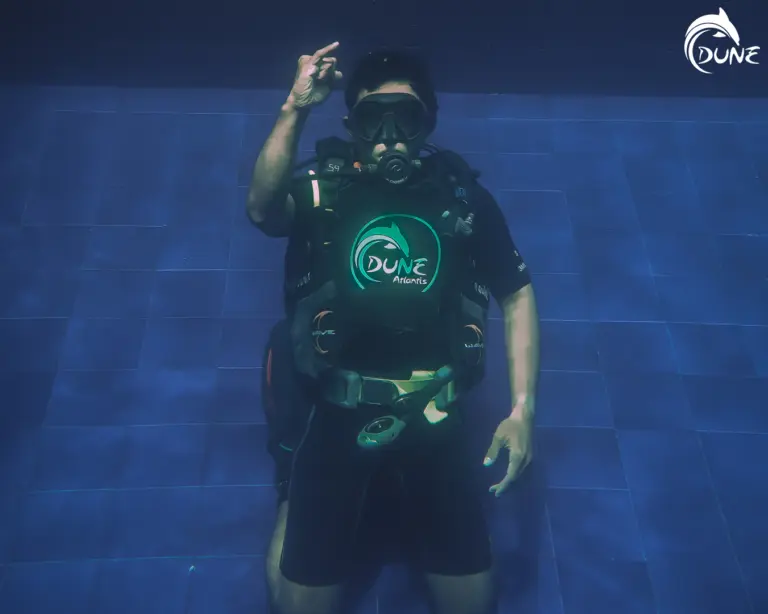We have heard several times about how important communication is. An effective communication is when we can get our point across to singular or multiple people and said receiver can understand your point clearly. On land, we communicate mainly using our mouth, speaking using our voices in languages. But what if you are 15 meters underwater with regulator in your mouth supplying oxygen, you noticed a rare marine creature, and want to share the experience with your diving buddy? Obviously, you can’t talk and even if you take off the regulator, human voice doesn’t exactly travel well underwater. What do you do then? You use hand signs.
Clear line of communication is even more important underwater than it is on land. If it is done wrong, a lot of confusion can rise and considering you are underwater, being confused would be a very bad situation to be in. You can use hand signals to establish a communication line with your diving buddies or you can use slates to write down your message. Signals are always responded, usually with an ok, so that both or multiple buddies know that they have successfully communicated.
When using hand signals underwater, they are usually done in front of the chest and generally require a response from whom you are communicating. They should be performed clearly, positively and strongly. Lethargic, slow or inappropriate signals could be an indication that something is wrong. Be sure to shine your torch on your hand signals during night dives. Of course, never shine the torch in other diver’s eyes, else you will damage their night vision for some time. Attract attention by moving the light beam from side to side preferably within your buddies’ field of vision.
During your first diving trip or open water classes, you might be taught basic hand signals to indicate various things such as ok, problem, ascend, descent, et cetera. But hand signals are not only to communicate how you are doing but also to inform the other divers of marine creatures nearby, either interesting or dangerous. Here are some that we raked up for you:
Marine Life Hand Signals
Of course, marine creatures are extensively variative, the signs above didn’t cover all sea life. Don’t worry, there are some more signs to learn. We still have some marine life hand signs under our sleeve which we will share with you on our next blog. Stay tuned!
A good dive buddy also gives their fellow divers a heads-up when an interesting and/or hazardous ocean creature is nearby. So how do you alert your dive group when a shark is finning by, a triggerfish is hidden under a ledge, or a tiny nudibranch is barely visible to the human eye? Underwater hand signals are the secret language of divers. Once you get good at them, you can have entire conversations underwater. Some divers even find themselves using scuba diving hand signals on land. Below, we have compiled another list of hand signal for marine lives.
Hand Sign Demonstrated by Our Dive Instructor
Triggerfish
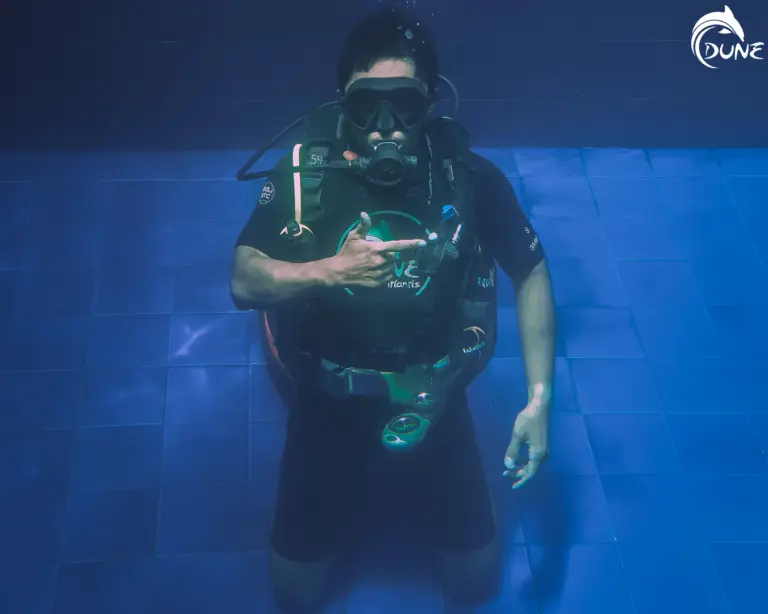
A ferocious fish found amongst the coral reefs where they usually feed. They will attack and chase you if you are in their territory or when they are provoked; should you say “triggered”. Hold your hand in the shape of a gun and pull the trigger referring to the name of this fish.
Turtle
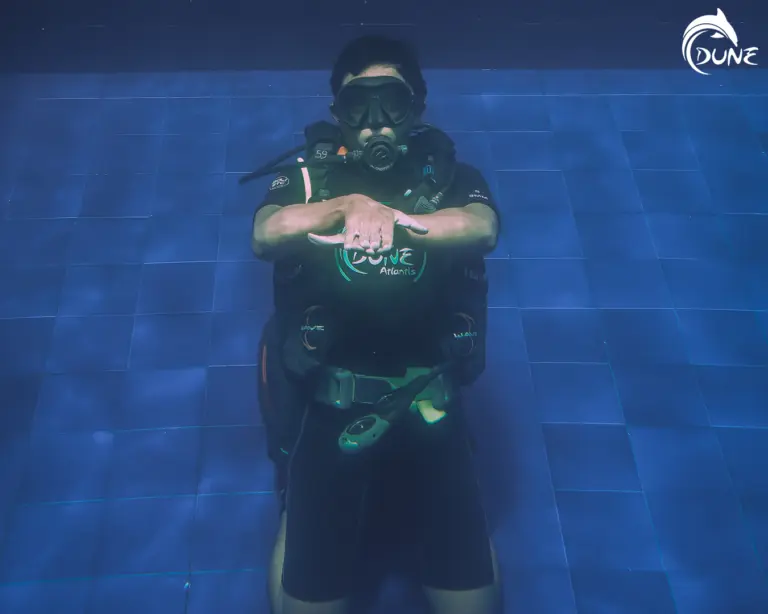
While holding one of your hands on the other, stick out your thumb and rotate them to signal that you have spotted a turtle nearby. The motion of the thumbs mimics how turtles use their flippers to swim while holding your hand on top of the other mimics the turtle’s shell.
Octopus
Spot an octopus hidden under the coral crevices? Hold one of your hand into a fist and set it on your other hand which fingers are wiggling around. The fist would mimic the octopus’ head and of course the wiggling fingers indicates the tentacles. Basically, use your hand to make out the general shape of an octopus.
Stonefish
Stonefish may sound boring but don’t be mistaken, this fish is venomous and harmful to human. When touched, it will erect spikes on its back that contains venom that could cause extreme external pain. To warn your dive buddies about this fish, simply lay a hand palm flat and put a fist on top of it mimicking how stonefish usually hid in the sands.
Mola Mola
A huge fish that can be spotted easily. But in case you spotted one but still too far away to be seen clearly, simply put your hand into a fist and stick out the thumb and pinky, just like mimicking a telephone. The signal simply indicates Mola Mola’s body shape, a huge circular body with huge dorsal and pectoral fins.
Manta
Manta rays are such elegant creatures that to signal them requires some eloquence. Stick out both your arms and flap your hands. No, this is not to signal a flying bird but to mimic Manta ray’s swimming figure. This way, you can also compare the elegance of your signal gesture to the Manta’s.
Shark
Sharks rarely attack human on surface level, but do you know it is even rare-er to encounter shark attack underwater. Still, being cautious around such magnificent creature is advised. To warn your dive buddies if there is a shark nearby, simply stick one of your hands on your forehead to mimic a shark’s dorsal fin.
Hammerhead
While still a shark, hammerheads have a special signal of their own. When you spot a hammerhead, put both of your hands into fist and place them on the sides of your forehead to mimic the shape of hammerhead’s head.
Frogfish
A tricky one to spot. The shape and color of their body makes them the master of camouflage in the reefs. Be sure to tell your buddies if you spot one by bending your index finger while placing your hand on your forehead. This gesture mimics the lumps on frogfish’s forehead.
Pygmy Seahorse
Another contender of hard to spot marine creature. This teeny tiny seahorse is not only hard to see but also very good at camouflage. But if you are lucky enough to spot it in between the reefs, simply stick out your pinky finger. You will find striking resemblance of your pinky and the pygmy seahorse.
Photos: David Clode, Brian Yurasits, Francesco Ungaro, Dan Seddon, Simon Deblock, Preston London, Wexor Tmg, Kris Mikael Krister, Rod Long, Dorothea OLDANI, Hong Kong’s Napoleon Wrasse Complex, Bryan Burgos, Florian Olivo ,Wolfgang Hasselmann,






